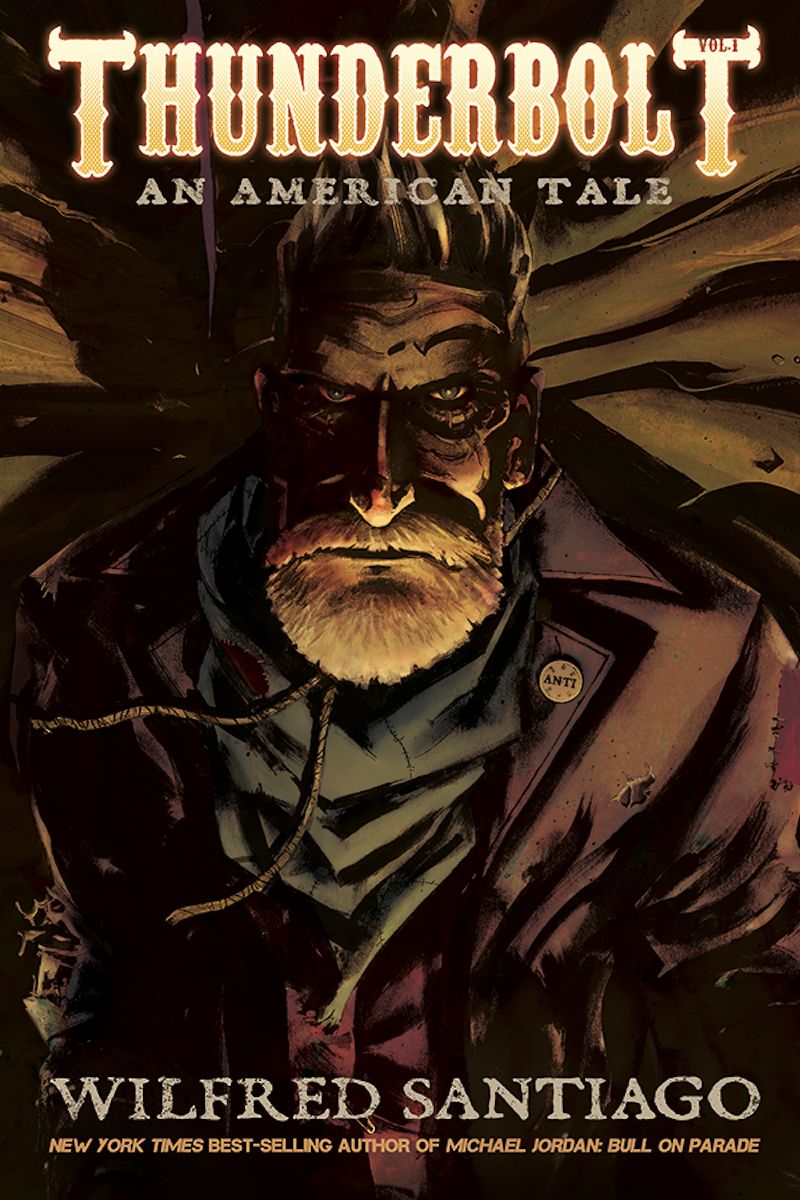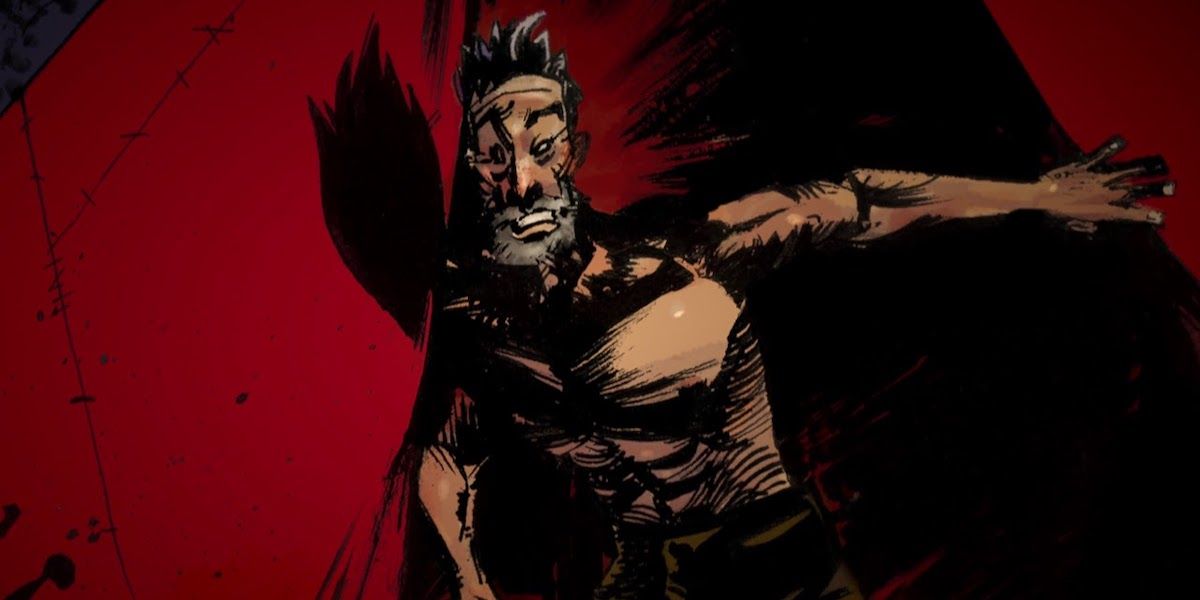Thunderbolt: An American Tale, Vol. 1,
- WRITER
- Wilfred Santiago
- Artist
- Wilfred Santiago
- Letterer
- Wilfred Santiago
- Cover Artist
- Wilfred Santiago
- Publisher
- Mad Creek Books
- Price
- 17.95
- Colorist
- Wilfred Santiago
As anyone who studies history can tell you, truth is often stranger, more visceral, and more exciting than fiction. While well-known periods of conflict in American history like the Civil War are fertile ground for epic storytelling, it may surprise some readers that the events leading up to this nation-defining period were just as contentious.
Such a moment in time is captured by Wilfred Santiago as he tells the tale of John Brown, legendary abolitionist, in Thunderbolt: An American Tale, Vol. 1. Using a varied, sensual, and even lurid style, Santiago brings the struggles and battles of John Brown and the abolitionist movement to life with an epic combination of surrealism and violence.
Thunderbolt opens by setting a combative historical stage for the conflicts that will soon follow. Important events from 1856 like the public caning of anti-slavery Senator Sumner by Preston Brooks and the sacking of Lawrence, which sparked the Bleeding Kansas period, reveal an America so divided that discourse has been supplanted by aggression.
Santiago’s depiction of these events is cartoonish in one moment and grotesquely exaggerated the next, serving as a sobering reminder of the country’s past as it faces political divides as contentious as those the United States is experiencing in the present day. Santiago interprets the past through a modern lens, as his characters sometimes speak in dialogue that sounds eerily like something that could be heard in 2019.
The outlandish historical events of the story push John Brown to action as he, his large family, and his abolitionist allies begin their crusade to fight slavery and demand its defenders pay for their sins against God and their fellow men in blood. The story first erupts during the Pottawatomie massacre, where John Brown and his entourage drag pro-slavery men from their homes and slaughter them.
The double page spread of John Brown busting down the door of his first victim, knife in hand and a murderous countenance upon his face, is particularly memorable. It’s a sequence reminiscent of earlier crime and horror comics, complete with an extreme close up of a victim’s eye. Santiago unflinchingly depicts the savagery of his protagonist. It’s an ugly situation set during an ugly time in American history where slavery existed and men fought and died over the issue even before the nation split apart. John Brown as depicted in Thunderbolt is both hero and villain, a man of strong convictions even if he might have taken them too far.
It is in these moments of violence that Santiago’s varying style is most prominent. On some pages, the artwork is gritty and loose, while others are colored like a van Gogh painting. The massacre concludes with a memorable sequence where the artwork bleeds away into a page of red watercolor, juxtaposing the beauty of nature with the barbarism of violence. Again, Santiago presents these garish events in an engaging manner but manages to do so without celebrating them.
Volume one of Thunderbolt ends at a lull in the action before Brown’s infamous raid on Harpers Ferry. However, if the next installment is anything like the first, it’s sure to be a wild ride. Fans of this work can also listen to the free soundtrack composed for the book at johnbrownbook.com.
Thunderbolt: An American Tale Volume One is available now from Mad Creek Books.


